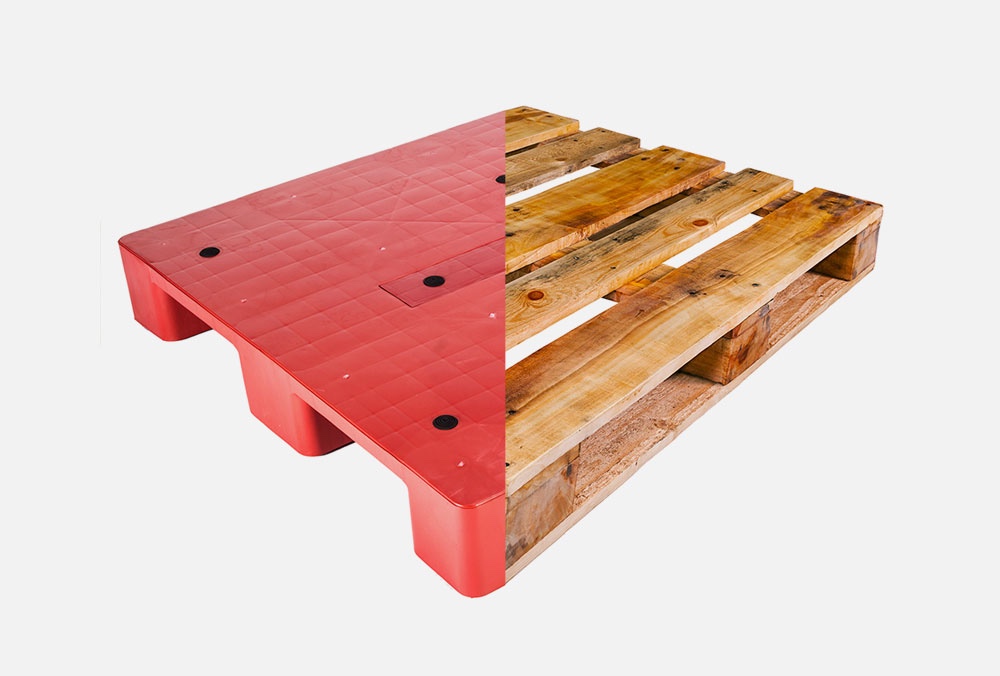They’re the minimalist cousin of pallets — and sometimes, just what your business requires.
In this more automated and digitized contemporary supply chain, the unheralded but real workhorse on the ground is as plain as ever: the skid. It can initially resemble a pallet missing some pieces. But peel the layers away, and there is a seasoned, affordable, and highly functional surface that is far from the poor man’s pallet.
What is a Skid?
A skid is essentially a pallet minus bottom deck planks — i.e., a runner-supported, one-deck loading surface. It was the forerunner of the contemporary pallet, in the days of material handling as a function of muscle power and straightforward expedients.
But don’t be fooled by minimalism. In most scenarios, less is more, and the skid is the clear winner in terms of cost, efficiency, and usefulness — especially if shipping or store conditions fit the profile.
Why SKIDs: Strength in Simplicity
They’re the minimalist cousin of pallets — and sometimes, just what your business requires.
In this more automated and digitized contemporary supply chain, the unheralded but real workhorse on the ground is as plain as ever: the skid. It can initially resemble a pallet missing some pieces. But peel the layers away, and there is a seasoned, affordable, and highly functional surface that is far from the poor man’s pallet.
What is a Skid?
A skid is essentially a pallet minus bottom deck planks — i.e., a runner-supported, one-deck loading surface. It was the forerunner of the contemporary pallet, in the days of material handling as a function of muscle power and straightforward expedients.
But don’t be fooled by minimalism. In most scenarios, less is more, and the skid is the clear winner in terms of cost, efficiency, and usefulness — especially if shipping or store conditions fit the profile.
Why SKIDs: Strength in Simplicity
Skids are lighter, easier to manufacture, and often cheaper than pallets. What they eliminate is the bottom deck — and the extra weight and expense of the materials.
They offer wonderful advantages such as:
- Improved sanitation: No lower deck means no entrapment of moisture or dirt — perfect where sanitation is critical.
- Smooth dragging: Due to the open bottom, there is easier dragging across floors — ideal for factory floors and moves of only a few steps.
- Stack ability: They nest more closely than pallets and are therefore easier to store in quantity.
Where side lifting is not a necessity, or loading is light and transient, skids are preferable.
Who uses Skids — And When ?
Industries that require speed, affordability, and floor mobility often opt to use skids. You will often see them in:
- Machine shops wherein heavy components are placed upon skids and pulled from station to station.
- Export environments, where single-use low-cost platforms are preferred.
- Production of custom products, whose specifications require non-standard height or size configurations.
- They are also preferred for project work — think construction projects or expo exhibits — where short-term transportability and ease of disposal are more significant concerns than ultimate durability.
Skid customization? Oh yes.
Do not confuse “non customizable” with “minimal.” Skids, as with pallets, can be made to suit specific operating applications.
Want a specific load-bearing capacity? Install heavier stringers.
Fragile items to handle? Have cushioned top decks.
Do they need to fit automatic handling systems? Take laser-exact measurements.
They can also be made of softwood, hardwood, metal, or plastic, depending on the purpose — offering plenty of flexibility to your business.
When pallets become too much, skids are just right.
Pallets are great, but in some cases, they’re more than you need. If the cargo is stable, the shipment is within the local area, or finances are tight — a skid is the more economically savvy option.
Fewer components eliminate the risk of breakage. Lighter weight is cheaper to ship. Simplified designs mean faster manufacturing. It is not the bells and whistles – efficiency.
The Skids Should Be in the Limelight They don’t command the same visibility as 4-way pallets or specialized crate solutions, but in the right scenario, they’re the perfect companion — light in weight, inexpensive, and made to do the job without the bells and whistles. While looking to streamline the logistics and reduce waste, going back to the straightforward skid would arguably be the most reasonable option on the floor. Want to integrate skids into your flow of logistics? We can discuss — and have you moving with smart, simple solutions customized to your requirements.
FUN FACT
Literally, skids were the initial universal material handling platform prior to forklift popularity in the 1930s. Actually, the word “pallet” doesn’t appear to exist on the scene until later; and therefore, skids literally brought about warehouse movement.
They were utilized in the early existence of factories and warehouses when World War I required handling materials
with some crude lift systems. And after years went by, when the bottom deck was introduced? Boom! The contemporary pallet!.
The next time you witness a skid, be aware that you are observing a bit of logistics history in the making!

